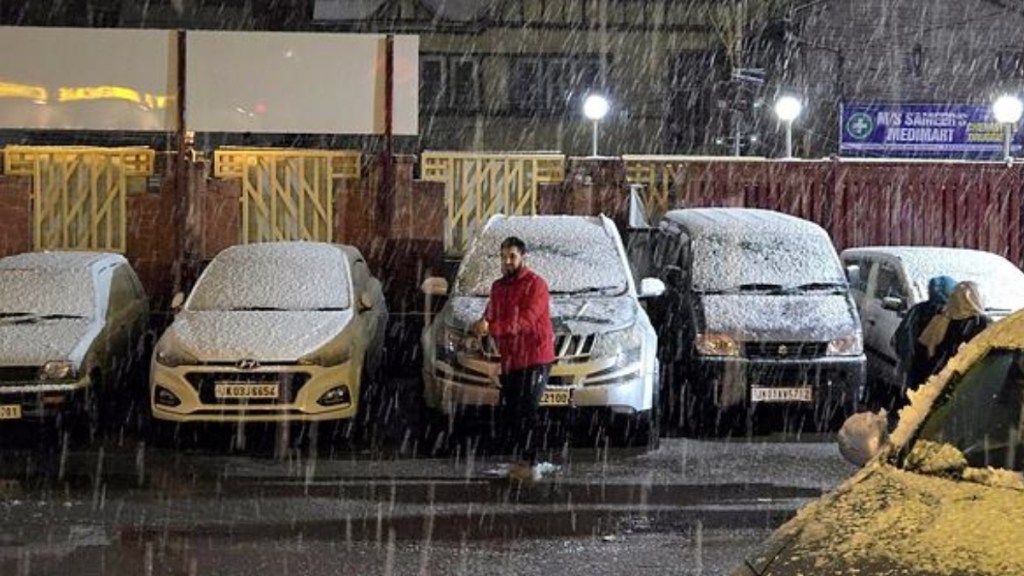Udhampur in Jammu experienced record-breaking rainfall on Friday, receiving more rain in a single day than typically falls throughout the entire winter season. The India Meteorological Department (IMD) reported that the city recorded 215.4 mm of rainfall in 24 hours, classified as ‘extremely heavy.’ In comparison, the usual cumulative rainfall for January and February at this station is 196.5 mm.
The heavy rainfall was part of a widespread weather event that affected northwest India starting early Friday. The Batote region of Jammu also set new records, surpassing previous rainfall highs. The last time Jammu experienced such intense rainfall in February was in 2003, according to IMD data. On Friday, Batote received 163.7 mm of rainfall, breaking its all-time February record of 161.6 mm set on February 19, 2003. Other areas, including Katra (118.6 mm), Banihal (100.4 mm), and Jammu (77.4 mm), recorded their highest February rainfall totals in a decade, the IMD noted.
This winter has been unusually dry across Jammu and Kashmir, as well as much of north and northwest India, with little to no rainfall or snowfall over the past two months. Rainfall deficits in these regions range between 40% and 85% this season.
“There is an active western disturbance affecting north and northwest India, combined with significant moisture incursion from the Arabian Sea, which has created favorable conditions for heavy rainfall, thunderstorms, and lightning. The weather is expected to improve from Saturday onwards,” an IMD official in New Delhi stated.
The intense weather also brought heavy rainfall to parts of Punjab, along with significant snowfall in the higher altitudes of Himachal Pradesh, Uttarakhand, and Ladakh. Notable rainfall measurements on Friday included Palampur (99.2 mm), Pathankot-Shahpur Kandi (77 mm), and Mussoorie (78 mm).
Overall, north and northwest India have experienced a particularly dry winter. Between January 1 and February 27, the region recorded just 27.3 mm of precipitation—64.4% below normal. Weak western disturbances and a lack of moisture contributed to these dry conditions, according to D.S. Pai, a senior meteorologist at IMD.
Pai noted that February saw seven western disturbances, but only one—between February 24 and 28—was strong enough to bring significant rainfall or snowfall. The others were weak and passed too quickly to have much impact. As a result, there were no cold waves or fog episodes in north and northwest India this February.
Jammu and Kashmir ended the January–February period with just 85.2 mm of rainfall, far below the normal 220.2 mm, placing the Union Territory in the ‘large rainfall deficit’ category for the winter season, with a 61% shortfall.

